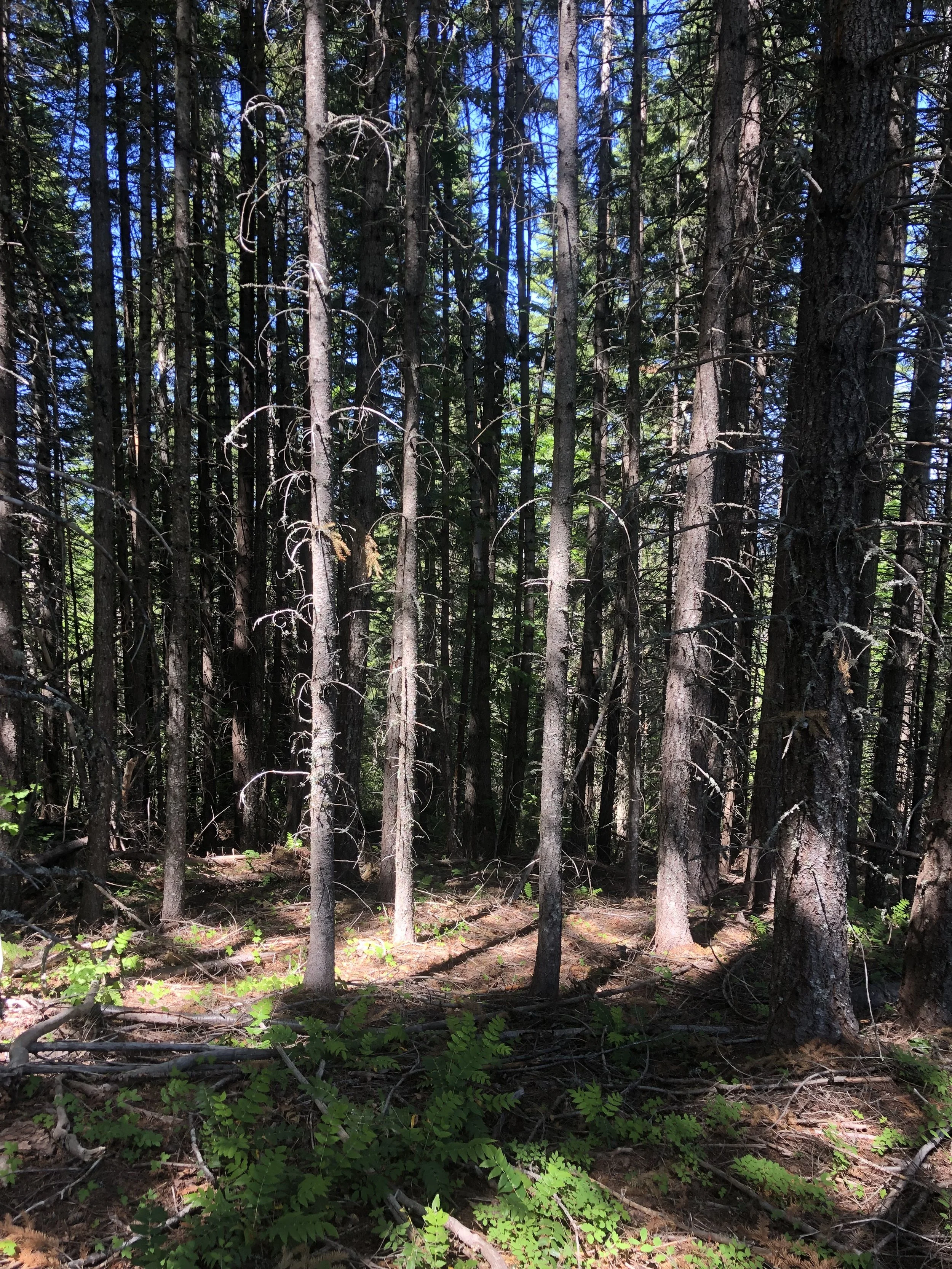South Five Mile Insect and Disease Project
The forests in the South Fivemile area have become overcrowded because natural wildfires that used to thin out trees haven’t happened for a long time. With so many trees packed closely together, they have to compete for sunlight, water, and nutrients—making it hard for them to grow and stay healthy.
This crowding also creates easy pathways for insects and diseases to spread. These pests are a natural part of the forest, just like fire, and they’ve lived alongside trees for thousands of years. Normally, when wildfires occurred regularly, these pests stayed at low levels and didn’t cause much harm. But without fire to help keep things in balance, outbreaks of insects or disease can sometimes grow rapidly and kill large numbers of trees in a short time.
The goal of the South Fivemile project is to help restore the natural balance in the forest so it can stay healthy and resilient for the future.
Map of proposed treatments in the South Fivemile Insect and Disease Project, Barlow Ranger District, Mt. Hood National Forest.
The Wasco County Forest Collaborative worked with the Mt. Hood National Forest to provide recommendations to promote forest resilience, retain the largest and healthiest trees, enhance wildlife habitat, implement riparian restoration, and reduce impacts of forest roads.
The project will reduce the risk of landscape-level disturbance and increase forest resiliency to insect and disease. Vegetation treatments would take place on less than 3,000 acres in the eastern portion of the Barlow Ranger District.
South Fivemile has numerous stands that are overly dense, creating conditions that can lead to high severity wildfire and insect outbreaks. Thinning and prescribed burning are intended to restore healthy forests and understory species diversity.
To learn more about the South Five Mile Insect and Disease Project visit the Mt. Hood National Forest website here.



